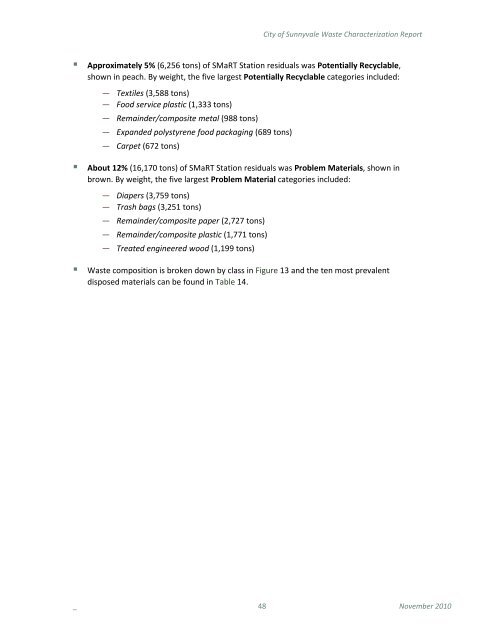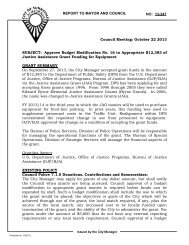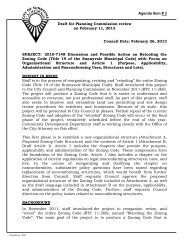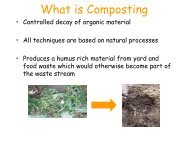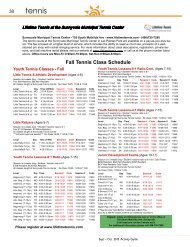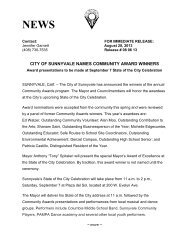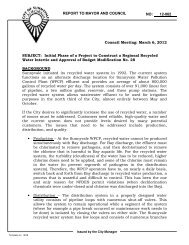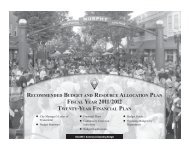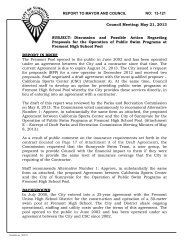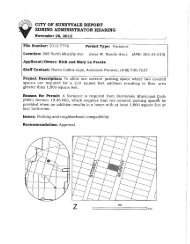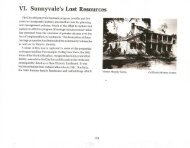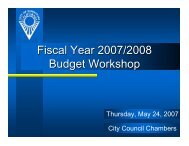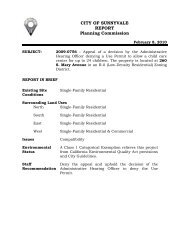City of Sunnyvale Waste Characterization Report
City of Sunnyvale Waste Characterization Report
City of Sunnyvale Waste Characterization Report
You also want an ePaper? Increase the reach of your titles
YUMPU automatically turns print PDFs into web optimized ePapers that Google loves.
<strong>City</strong> <strong>of</strong> <strong>Sunnyvale</strong> <strong>Waste</strong> <strong>Characterization</strong> <strong>Report</strong><br />
Approximately 5% (6,256 tons) <strong>of</strong> SMaRT Station residuals was Potentially Recyclable,<br />
shown in peach. By weight, the five largest Potentially Recyclable categories included:<br />
— Textiles (3,588 tons)<br />
— Food service plastic (1,333 tons)<br />
— Remainder/composite metal (988 tons)<br />
— Expanded polystyrene food packaging (689 tons)<br />
— Carpet (672 tons)<br />
About 12% (16,170 tons) <strong>of</strong> SMaRT Station residuals was Problem Materials, shown in<br />
brown. By weight, the five largest Problem Material categories included:<br />
— Diapers (3,759 tons)<br />
— Trash bags (3,251 tons)<br />
— Remainder/composite paper (2,727 tons)<br />
— Remainder/composite plastic (1,771 tons)<br />
— Treated engineered wood (1,199 tons)<br />
<strong>Waste</strong> composition is broken down by class in Figure 13 and the ten most prevalent<br />
disposed materials can be found in Table 14.<br />
_ 48 November 2010


